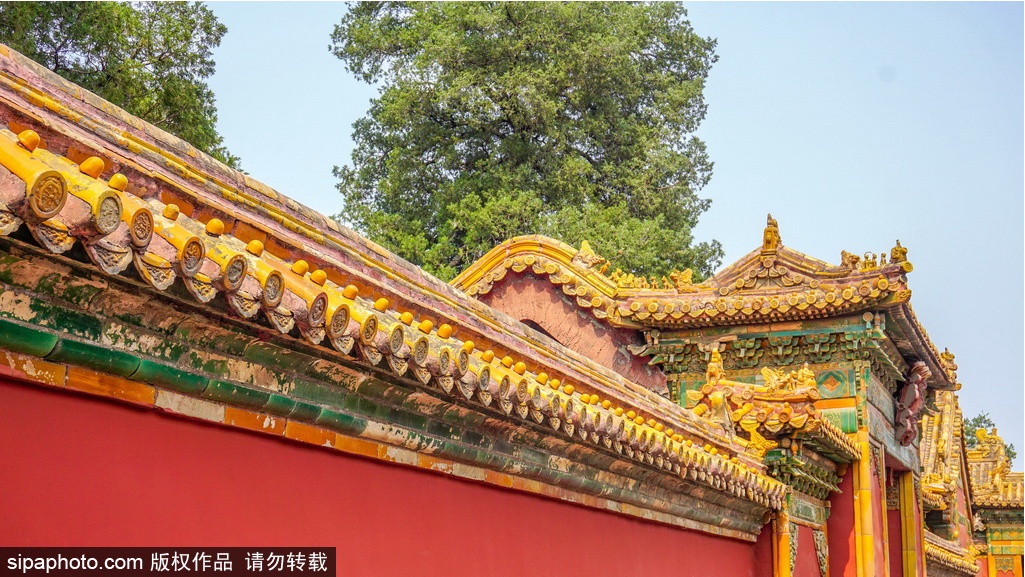The city wall of the Forbidden City was built in 1420, the 18th Yongle year of the Ming Dynasty. Although rebuilt in the Qing Dynasty, the overall size and layout remain unchanged.

The City Wall is a rectangle, 961m long from the south to the north and 753m wide from the east to the west, with a total perimeter length of 3,428m. The City Wall is 9.90m tall. Its section is a trapezoid with narrow top and wide bottom. The bottom is 8.62m wide and the top 6.66m wide. The internal surface and the external surface respectively lean 0.96m toward the middle at the top, nearly 10% of the height of the City Wall, making it looks solid.
The underground base material comprises layers of earth and brick rubbles, punned firmly layer after layer. Under the wall 0.15-meter-thick stepping stones are applied. Four layers of city wall bricks are respectively paved on the internal and external sides over the stones, about 2 meters thick. The City Wall is mostly constructed alternately in header course and stretcher course and the pointing is applied with mixed white mortar and polished glutinous rice juice. The central part of the wall is consolidated and filled with loess. After the structure is completed, bricks are paved. The surface of the bricks on both sides of the City Wall is constructed with fine mud bricks “qianbai” so it is smooth and flat, beautiful and climbing resistant.
The external side of the city wall top is constructed crenellations with top and twin-side crenels. Crenellations are mostly 1.34 meters high and 0.37 meters thick. Among the crenels are openings for overlooking. The internal side is constructed with parapet walls, a little shorter than crenellations. There are capping bricks and glass apron flashing on the top of the wall, covered by ridge tiles that form a corner shaped wall crown. The floor of the city wall is constructed with city wall bricks, higher in the external side and lower in the internal side to form a slight gradient, which makes it easier for rainwater to flow out from the drains at the bottom of the parapet walls.



